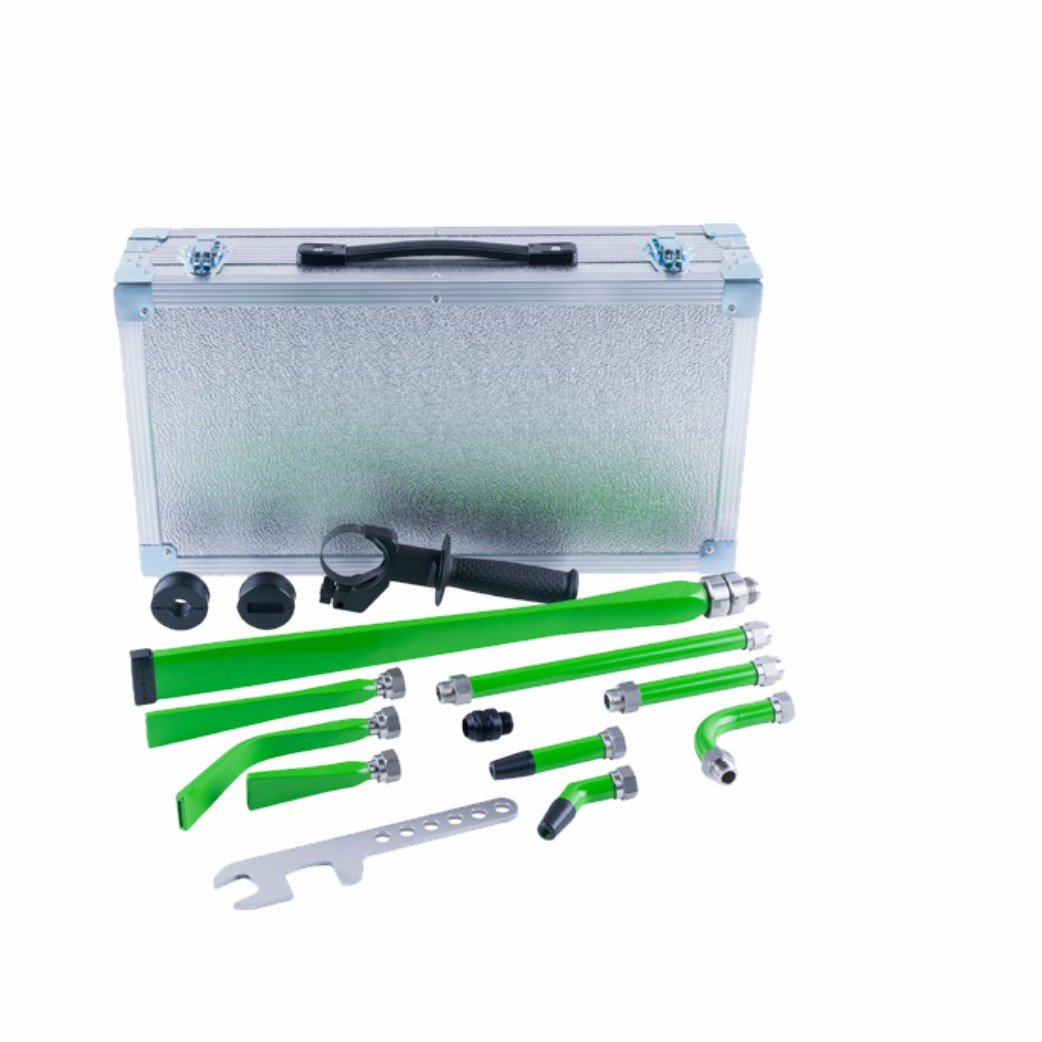 Made in Slovakia
Made in Slovakia ISO 9001
ISO 9001 Made in Slovakia
Made in Slovakia ISO 9001
ISO 9001Dry ice blasting is deceptively simple—accelerate CO₂ pellets with compressed air and strike a surface—but the nozzle quietly determines most of what happens next: impact energy, coverage, air/ice consumption, noise, and even substrate risk. Choosing the right nozzle (size + shape) can cut cleaning time in half or prevent damage on delicate assets.
Nozzle size controls mass flow, velocity potential, and resource demand; shape controls how that energy is distributed and where it can reach.

Size: Diameter, Length, and Flow
Round nozzles: Narrow, concentrated beam. Good for stubborn contaminants, edges, welds, small features. Maximum localized impact; slow area coverage.
Flat nozzles: Wide, thin sheet (e.g., 15°–60°). Good for large panels, floors, molds with broad faces, soot removal on masonry. Faster coverage with lower point loading.
Angled/Curved nozzles: Redirected jet for reach. Good for undercuts, behind guards, inside cavities, ribbed tooling. Access over raw power; often paired with smaller orifices.
Compressor & Hose Considerations